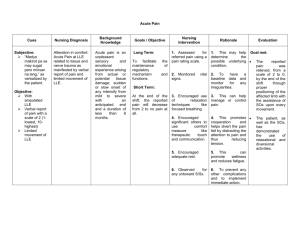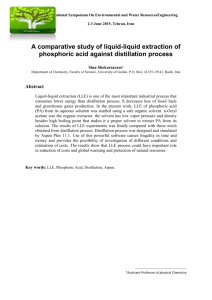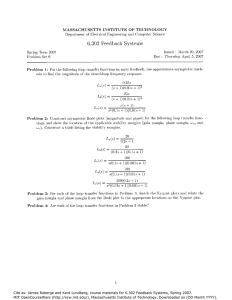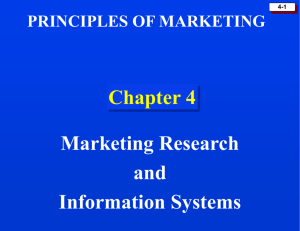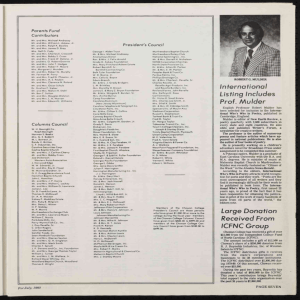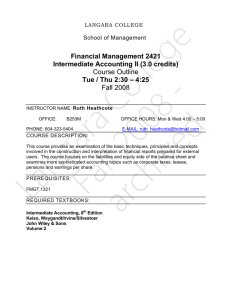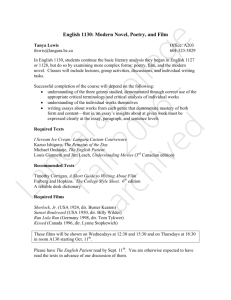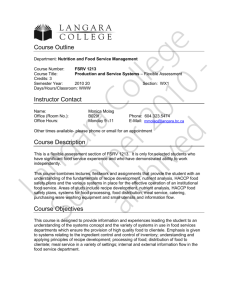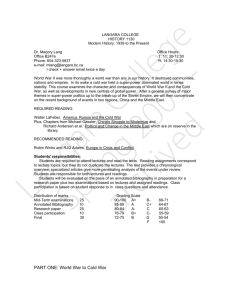General Laboratory Safety Training Quiz (G_001)
advertisement
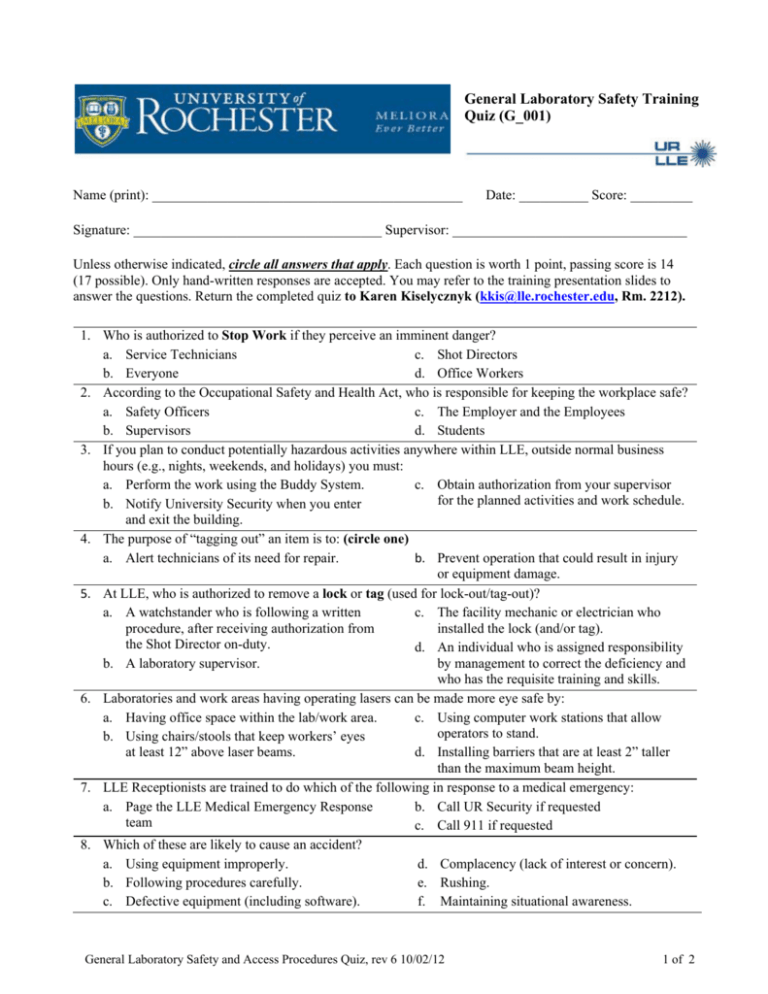
General Laboratory Safety Training Quiz (G_001) Name (print): _____________________________________________ Date: __________ Score: _________ Signature: ____________________________________ Supervisor: __________________________________ Unless otherwise indicated, circle all answers that apply. Each question is worth 1 point, passing score is 14 (17 possible). Only hand-written responses are accepted. You may refer to the training presentation slides to answer the questions. Return the completed quiz to Karen Kiselycznyk (kkis@lle.rochester.edu, Rm. 2212). 1. Who is authorized to Stop Work if they perceive an imminent danger? a. Service Technicians c. Shot Directors b. Everyone d. Office Workers 2. According to the Occupational Safety and Health Act, who is responsible for keeping the workplace safe? a. Safety Officers c. The Employer and the Employees b. Supervisors d. Students 3. If you plan to conduct potentially hazardous activities anywhere within LLE, outside normal business hours (e.g., nights, weekends, and holidays) you must: a. Perform the work using the Buddy System. c. Obtain authorization from your supervisor for the planned activities and work schedule. b. Notify University Security when you enter and exit the building. 4. The purpose of “tagging out” an item is to: (circle one) a. Alert technicians of its need for repair. b. Prevent operation that could result in injury or equipment damage. 5. At LLE, who is authorized to remove a lock or tag (used for lock-out/tag-out)? a. A watchstander who is following a written c. The facility mechanic or electrician who procedure, after receiving authorization from installed the lock (and/or tag). the Shot Director on-duty. d. An individual who is assigned responsibility b. A laboratory supervisor. by management to correct the deficiency and who has the requisite training and skills. 6. Laboratories and work areas having operating lasers can be made more eye safe by: a. Having office space within the lab/work area. c. Using computer work stations that allow operators to stand. b. Using chairs/stools that keep workers’ eyes at least 12” above laser beams. d. Installing barriers that are at least 2” taller than the maximum beam height. 7. LLE Receptionists are trained to do which of the following in response to a medical emergency: a. Page the LLE Medical Emergency Response b. Call UR Security if requested team c. Call 911 if requested 8. Which of these are likely to cause an accident? a. Using equipment improperly. d. Complacency (lack of interest or concern). b. Following procedures carefully. e. Rushing. c. Defective equipment (including software). f. Maintaining situational awareness. General Laboratory Safety and Access Procedures Quiz, rev 6 10/02/12 1 of 2 9. If someone is injured and you are first on the scene, you should: a. Assess the situation - don’t put yourself in c. If trained, start first-aid using personal danger. protective equipment to prevent contact with body fluids (blood, saliva, etc.). b. Call for help, solicit help from others. 10. “Buddies” are responsible for: a. Ensuring partner is using safe work practices. c. Being available to assist in an emergency. b. Training his/her partner. d. Remaining in contact with partner. 11. Before starting work on a piece of equipment, which of these energy sources must be made safe? a. Electrical (e.g. circuit breaker, battery d. Pressurized gas/fluids (e.g. gas cylinder, backup, capacitors) hydraulic lift) b. Mechanical (e.g. gas spring on hinged door) e. Gravitational loads (e.g. load suspended on a hoist, crane or elevator) c. Thermal (e.g. cryogenic fluids, steam pipe) 12. When is it OK to violate clean room policy? (circle one) a. Never. c. When responding to an emergency. b. If you are entering only briefly. d. When you are in a hurry. 13. During an emergency building evacuation, you must: a. Notify your supervisor or host in writing d. Move 50’ from the building and stay clear of before leaving LLE property. emergency vehicles. b. Exit via the most direct, safe route. e. Look for a part of the building that is not in alarm status before exiting. c. Use the elevators. 14. LLE personnel must ensure that guest workers assigned to them and/or contractors working in areas they supervise are aware of LLE site-specific hazards and that they are adequately supervised. a. True b. False 15. What should be done if a piece of equipment has a known or suspected safety deficiency? a. See if it’s something you can fix yourself. c. Notify the work area supervisor or a Safety Officer to tag out the item and enter it into the b. Stop using it immediately. out-of-commission (OOC) log. 16. Who must have UR/LLE ID, or an LLE visitors pass, visible while in the LLE facility? a. Contractors. c. Visiting researchers & technicians. b. LLE staff. d. UR Faculty & Students. 17. Which of these personal items assigned to you by LLE/UR may be shared with others: a. Radiation dosimeter badges & rings. c. Computer accounts/passwords. b. Keys. d. None of these. Questions below are not graded. Those responding “yes” will be notified when training is scheduled, but are NOT obligated to complete the training. A limited number of openings are available in each class. Do you want to sign up for Fire Extinguisher Training? [G_003, optional, offered on-site in fall. ~30 minute instruction includes demonstration and use of extinguisher on simulated fire. Valid 24 months.] a. Yes b. No Do you want to sign up for First Aid Training? [G_004, optional, American Heart Assn. Basic First Aid certification includes CPR (Cardio Pulmonary resuscitation) and AEDs (Automated External Defibrillator). Valid 24 months. Offered on-site. ~8 hour instruction] a. Yes b. No How can this training material be improved? _______________________________________________________________________________________ ________________________________________________________________________________________ General Laboratory Safety and Access Procedures Quiz, rev 6 10/02/12 2 of 2
